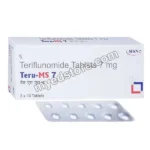Experts are reporting patients are more interested than ever in conservative no-prep veneers to transform their smiles. But is this really a new trend, a response to coverage of poorly done traditional veneers, an evolution of cosmetic dentistry or a combination of all three?
Featured Experts
What Are No-Prep Veneers?
We can think of veneers as a custom-made porcelain (or composite resin) shell that’s permanently adhered to your natural tooth to improve the look of teeth, addressing problems like color, chipping and gaps. To make room for the shell, your natural teeth are ‘prepped,’ where a small amount of enamel is removed.
No-prep veneers have an ultra-thin shell to avoid having to remove enamel to make room for them.
“When we’re talking no-prep veneers, that means we’re not prepping the tooth the way we would for a traditional veneer,” explains Los Altos, CA cosmetic dentist Joseph Field, DDS. “That means there are some restrictions to what we can do.”
That means not everyone is actually a candidate for no-prep veneers. “If you have misaligned teeth or naturally large or bulky teeth, it may not be possible to treat you with no-prep veneers. Some trimming and preparation would be required to make your smile look its best,” says Houston cosmetic dentist Guy M. Lewis, DDS. “If there are dark stains on the teeth, the thin porcelain may not adequately conceal the discoloration completely.”
What’s Behind the Rise in Popularity?
There are a couple of key benefits to no-prep veneers that make them a popular choice.
“Firstly, anesthesia is usually not required,” explains Dr. Lewis. “We’re able to preserve the natural tooth structure and the porcelain is ultra-thin. This reduces the likelihood of gum problems associated with other bulky no-prep veneers.”
From the perspective of a cosmetic dentist, no-prep veneers are not new. Instead, their current rise in popularity is a sign of changing consumer attitudes toward bad dentistry.
The Circle of Trends
“The first time no-prep veneers really came on the scene was with a product called Lumineers,” Dr. Field says. “And they received a lot of popularity for being ultra-thin and requiring no prep to the tooth structure, but when they were applied to patients who were not good candidates, you started to get that bulky, chiclet look to them that gave them a very bad reputation.”
In response, consumers moved away from this early no-prep option back toward traditional veneers. That is, until bad dentistry cases of “Turkey Teeth” started gaining traction in the news. As we read more about horror stories where natural tooth structure is aggressively removed to make way for poor-fitting and unnatural-looking veneers, consumers are looking again to no-prep options to keep their teeth safe.
“Many dentists use an overly aggressive prep technique for veneers,” says Chicago cosmetic dentist Nathan Hoffman, DDS. “While this is an outdated method, unfortunately, many dentists lack the skill and experience required to successfully employ a minimal tooth prep technique while ensuring the proper space for veneers.”
Trend or Evolution?
But good cosmetic dentists are not going to sacrifice large amounts of healthy enamel, whether they’re doing no-prep or traditional veneers. “In any dental procedure, maintaining the maximum amount of healthy, natural tooth structure is key for long term success and maintaining proper oral health,” notes Dr. Hoffman. “This is especially true for veneers.”
“It’s so important to note that no-prep veneers are an amazing option for people that are good candidates, but that doesn’t make traditional veneers a bad option at all,” Dr. Field says. “No-prep veneers are an evolution of veneer technology, but they don’t work for everyone. For a well-trained cosmetic dentist, they’re an essential part of the toolkit, not a new trend.”
In fact, for a quality cosmetic dentist, there are no trends. “When people come in and say, ‘I’ll only do veneers if they’re no-prep,’ that sets the entire treatment up for failure,” Dr. Field says. “Great cosmetic dentists will always consider no-prep and minimal-prep as options first. But if the patient is not a good candidate, there are a host of options, including traditional veneers, that can meet patient goals without sacrificing tooth structure or resulting in an unnatural look.”







